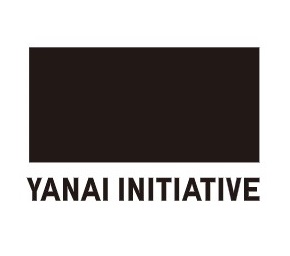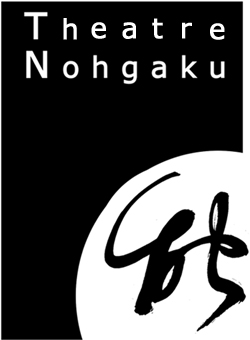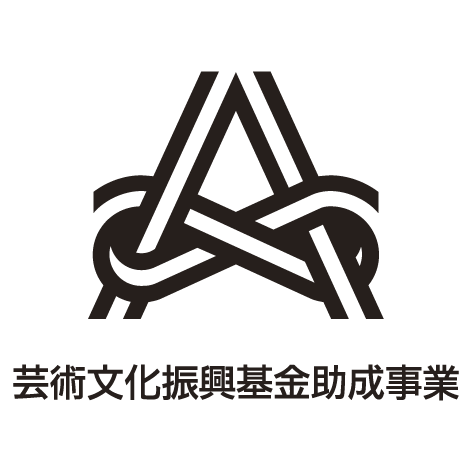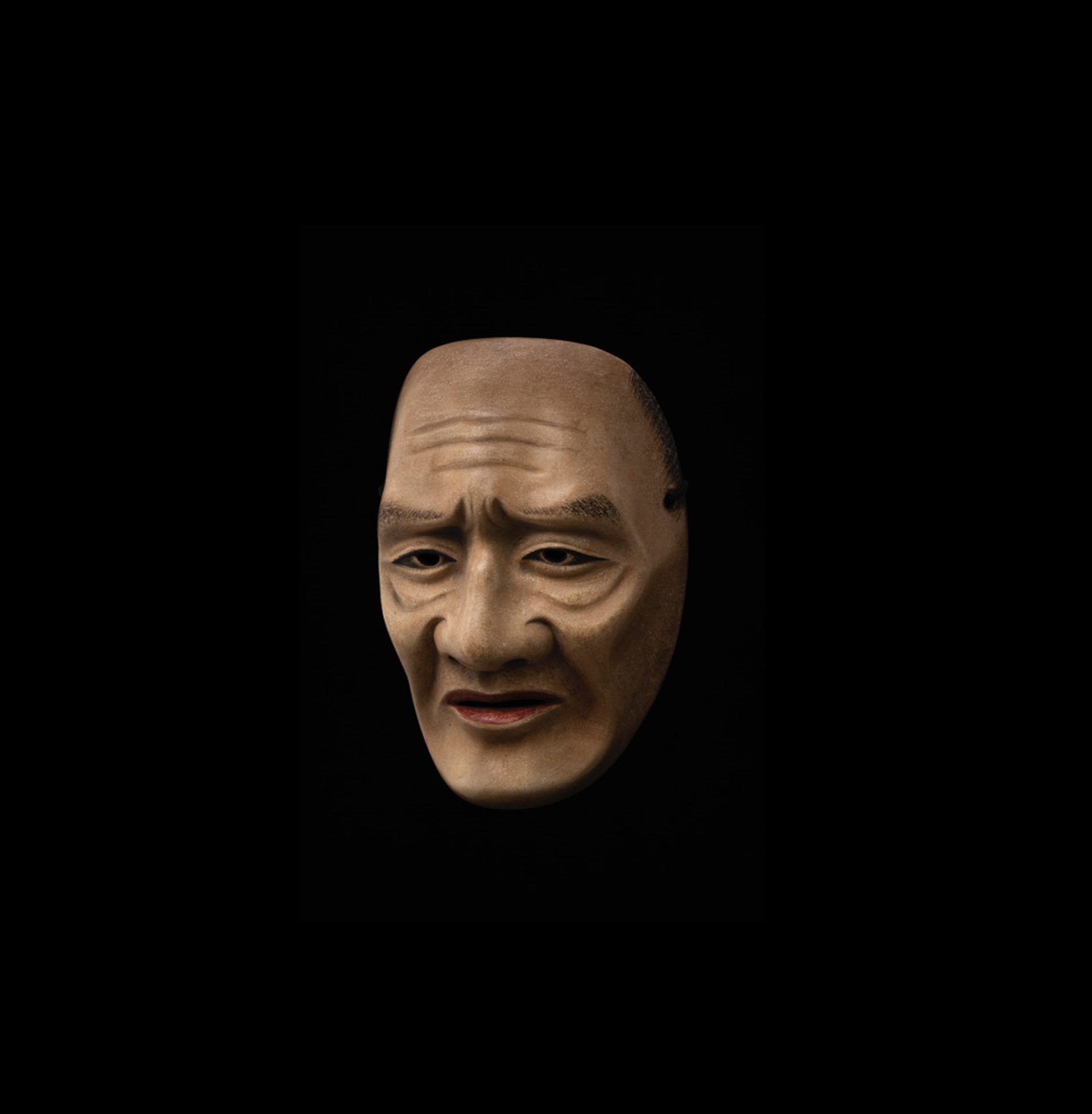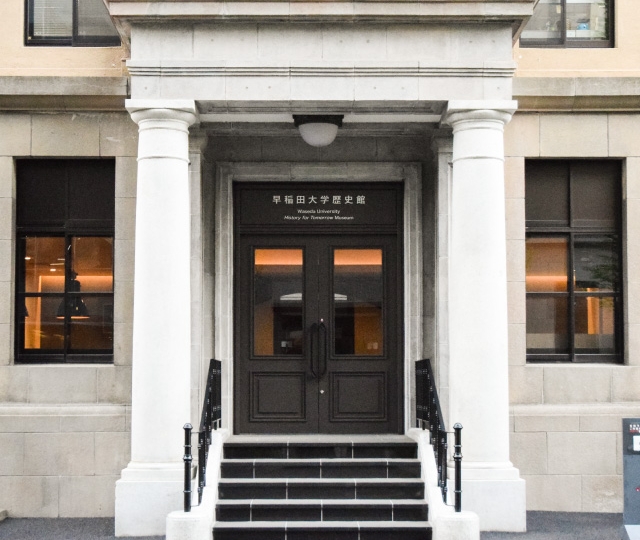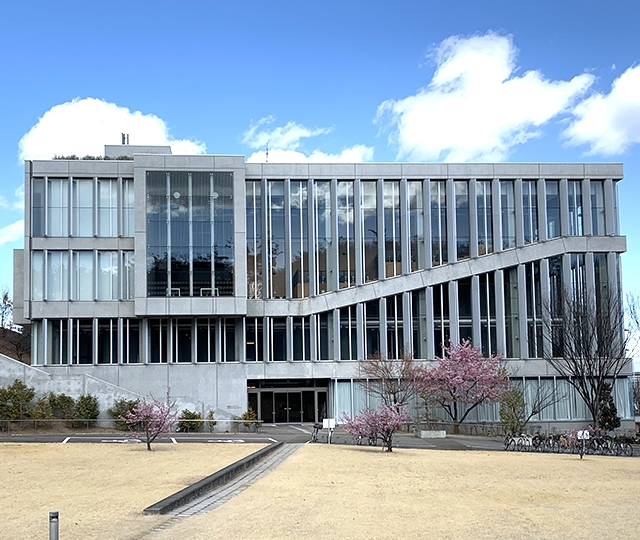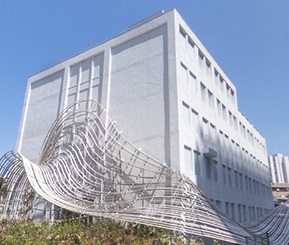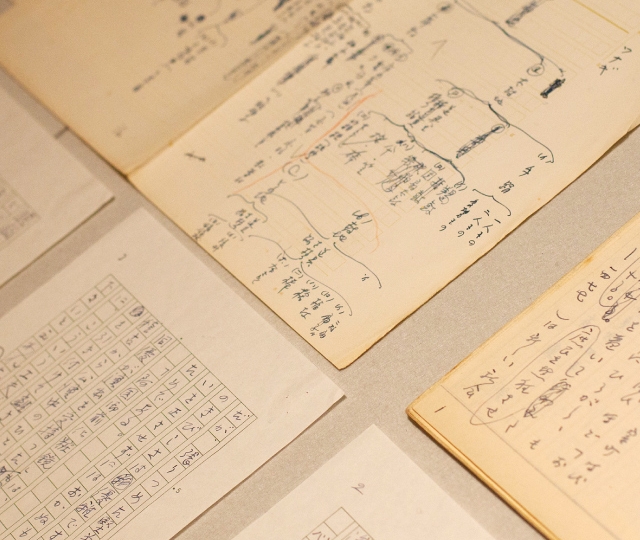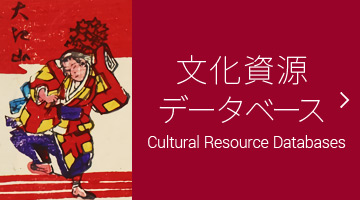- Featured Article
【Yanai Initiative】Four Days of English Language Noh “Oppenheimer” PROGRAM (August 6 & 9, 2025)
Four Days of English Language Noh "Oppenheimer" Program
Tue 01 Jul 25
Four Days of English Language Noh "Oppenheimer" Program
Tue 01 Jul 25
Presented by The Yanai Initiative and Theatre Nohgaku.
*Day1
Wednesday, August 6, 2025 6:30pm
Kita Noh Theatre [4-6-9 Kamioosaki, Shinagawa-ku, Tokyo]
*Day2
Saturday, August 9, 2025 2:00pm
Kita Noh Theatre [4-6-9 Kamioosaki, Shinagawa-ku, Tokyo]
Program
■ Maibayashi Atsumori
■ Kyogen Celui qui imite trop bien [The Mimic (Kuchimane)]
Break
■ Noh in English Oppenheimer
* Maibayashi will be performed in Japanese and Kyogen in French and Japanese.
Synopsis
Maibayashi: ATSUMORI
Several years after the end of the Genpei civil wars, Kumagai no Jirō Naozane becomes a priest in order to pray for the soul of the young Taira no Atsumori whom he killed in battle. Kumagai returns to the site of the battle at Ichinotani where he meets a lowly grasscutter playing a flute who asks him to pray for Atsumori. The grasscutter is in fact the ghost of Atsumori who later appears to Kumagai and re-enacts how he was killed after having returned to camp to fetch his forgotten flute. Atsumori realizes that the enemy Kumagai is now the one who will pray for his soul. The two, once enemies, will now be reborn on the same lotus flower. The maibayashi performed here is the final dance of the play.
Kyogen: Celui qui imite trop bien
A master has received some excellent saké and orders his servant Taro Kaja to find someone to drink with him. Taro Kaja offers himself but the master says that will be no fun to drink with his own servant. Taro Kaja is irritated at his master so invites a well-known heavy drinker to drink with him. When the master sees who he has invited, he decides he will try and get rid of the drunkard but do it politely. He orders Taro Kaja to do exactly as the master does. Taro Kaja gets revenge by parroting everything the master does. In the end, the master gets disgusted with Taro Kaja and throws him down, then apologizes to the drunkard. After the master leaves, Taro Kaja throws down the drunkard and then apologizes to him.
Noh in English: OPPENHEIMER
Waki: A Pilgrim
Mae-shite: A Buddhist Priest
Ai-kyogen: A Local Man
Nochi-shite: Oppenheimer
Nochi-tsure: Fudō Myō-ō
Act I
1. Waki entrance::
To nanori-bue solo flute music, a Pilgrim enters and announces that he is visiting the 88 Sacred Places of Shikoku. He tells how in the course of his pilgrimage, a great sadness came upon him, but the Great Unmoving Wisdom King, Fudō Myō-ō, appeared to him in a vision and offered him solace. Fudō told the Pilgrim to go to Hiroshima and seek an ancient temple. There he will discover the source of his suffering and be liberated from his heavy heart. In a travel song, the Pilgrim describes his journey across the Inland Sea to Hiroshima, and is reminded of the airplane that had followed this same route on its journey to drop the atomic bomb on Hiroshima. Arriving in Hiroshima, a pair of stone foxes appears to him and he decides to rest beside them.
2. Shite entrance:
To issei music, a Buddhist Priest enters and announces that he has been condemned to 500 lives as a fox with no redemption. He sings of the stifling moonless August night, heavy with foreboding, and of a ruined temple to which he is bound to return every year on the eve of the atomic bombing.
3. Shite/Waki dialogue:
The Priest notices the Pilgrim and asks him who he is. The Pilgrim tells of his journey from Shikoku and asks the Priest the name of the temple wondering if this could be the temple that Fudō Myō-ō instructed him to find. The Priest reveals that it is the ancient fox temple of Priest Hyakujō and explains that the profound suffering that was unleashed in Hiroshima has spread throughout the world. The only way to be liberated from his suffering, he tells the Pilgrim, is to shed his ignorance and take responsibility for his actions.
4. Shite narration scene:
The Priest then narrates the founding story of the temple, which concerns the unavoidability of the law of cause and effect. In the distant past a student monk asked Priest Hyakujō, “does an Enlightened person fall under the law of cause and effect?” To which Priest Hyakujō replied, “such a person does not fall under the law of cause and effect.” For this reply, he was condemned to be reborn 500 times as a fox. The chorus tells how Priest Hyakujō had been deluded by Emptiness and how, as a result of his error, he had suffered 500 fox-lives. The Priest then goes on to relate that eons later Robert Oppenheimer was deluded by the insubstantiality of the subatomic world and made a bomb that, in an instant, destroyed Hiroshima, unleashing centuries of pain. The chorus tells that, like Priest Hyakujō, Oppenheimer had also been deluded by Emptiness, and that his mistake had unleashed great suffering.
5. Shite narrative dance:
The chorus sings of the nuclear explosion: of the brilliance of a thousand suns. “Is this the splendor of the Mighty One?” This refers to the Indian god, Krishna, whose words Oppenheimer had borrowed when he said: “now I become death.” The Priest reminds us that Oppenheimer was but a mere human who was bound to suffer the consequences of his actions. The chorus sings of how, by gambling in the sub-atomic realm with “God’s building blocks,” Oppenheimer had turned his gaze from the human realm. Only after the bomb had wrought its terrible devastation— causing multitudes to burn alive—did he understand the devastating consequences of his actions. He was perpetually damned and beyond redemption. He pleaded not to be made to enter the firestorm of Hiroshima and of the hell-realms.
6. Shite exit:
The Pilgrim, in words sung by the chorus, observes how well the Priest seems to know the mind of Oppenheimer. The Priest replies that he knows what it means to be bound to the eternal wheel of life and death and repeatedly be reborn as a fox. His agonies, he tells us, grow stronger lifetime after lifetime. The Priest then confesses that he is the Ghost of Robert Oppenheimer and he spawned a million heavy hearts throughout the world, asserting that he will never be able to atone for his crimes. He turns and exits, walking towards the burning city. The Pilgrim wonders if it was really the Ghost of Robert Oppenheimer that he had seen.
Ai-Kyogen
7. Interlude:
A Local Man arrives to conduct rituals to Inari, the fox god of the rice fields, and to dance in memory of his father who had been killed here by the atomic bomb. He notices the sleeping Pilgrim leaning against one of the stone foxes and wakes him. The Pilgrim apologizes for falling asleep saying he had traveled a long way and tells why he has come. The Local Man tells of his father and of the rituals he always performs here in his memory. The Pilgrim in turn tells of his meeting with a Priest of the ruined temple who also comes every year. The Local Man says that there is no temple but recounts how his father used to tell him a story about Priest Hyakujō, who became a fox but was later released from his fox-form. The Pilgrim reveals that the Priest he met had told him the same story, but had said nothing about Hyakujō being released from his fox-lives. The Local Man wonders if it was the ghost of his own father who had appeared and dances his ritual Chinkon-no-mai dance in his father’s memory. The Pilgrim then recalls that the Priest he met said his name was Oppenheimer. The Local Man is surprised knowing that it was Oppenheimer who made the bomb. Alarmed, he asks the Pilgrim to immediately exorcise the Ghost then quickly leaves.
Act II
8. Waki’s wait:
The Pilgrim sings of keeping company with foxes as the night deepens, and chants the Prajñā Pāramitā Heart Sutra to invoke the power of Fudō Myō-ō.
9. Nochishite entrance:
The Ghost of Oppenheimer sings offstage of how he is compelled to return each year to Hiroshima to suffer the thousand-sun fire-hell. The Chorus describes the entrance of the Ghost of Robert Oppenheimer drawn by the chanting of the Prajñā Pāramitā Heart Sutra.
10. Discussion:
The Ghost tells how he is obliged by his crimes to return to the fire-hell of Hiroshima again and again—year after year; lifetime after lifetime. The Pilgrim asks, “when you told the story of Hyakujō and his fox-lives, why did you not tell me that when Priest Hyakujō acknowledged his error, and accepted the unavoidability of the law of cause and effect, he was released again into his human body?” Oppenheimer’s Ghost replies angrily that redemption has no part in his story. The Chorus for the Pilgrim reminds the Ghost that the reason he told the Pilgrim the story in the first place was in order to relieve him of his suffering. The Ghost replies that in his heart he cannot believe that one who has committed such crimes can ever atone for them. But then, in a moment of epiphany, the Ghost realizes that he must truly embrace the consequences of his actions and willingly embrace the flames of the Hiroshima fire-hell.
11. Nochishite dance:
The Ghost turns and slowly walks along a path of flame. The chorus sings of his welcoming the flame’s embrace. In that moment, the bonds that bind him to the wheel of birth and death dissolve.
12. Fudō Myō-ō Entrance and Dance:
To powerfully slow ōbeshi entrance music, Fudō Myō-ō enters. In dialogue with the chorus, he declares that it is “no small thing” for Oppenheimer to have willingly taken upon his own body the pain that he inflicted at Hiroshima. It is “no small thing” to accept the flame’s embrace for all eternity. Fudō Myō-ō dances a powerful tachimawari dance circling the stage, then sings of his sword, which he wields to liberate all beings, and his rope to ensnare mistaken views. He presents this sword and snare to Oppenheimer so that he may take on the work of freeing all those who suffer.
13. Final Dance:
Oppenheimer declares that he will dance to liberate all beings, then dances a quick high-pitch banshiki kyū-no-mai dance. Dancing with Fudō Myō-ō’s power he declares that he dances to save you all. The chorus describes how, with one stroke of Fudō Myō-ō’s sword he cuts away 500 lives of error, and with Fudō Myō-ō’s rope he ensnares the foxes and demons of delusion. The sword cuts off ignorance; the snare brings peace to tortured hearts. The chorus sings of the Great Unmoving One, dancing for all beings.
Cast
Maibayashi: ATSUMORI
Shite
Matsui Akira
Nohkan (Flute)
Tsukitaku Satoshi
Kotsuzumi (Shoulder drum)
Omura Kayu
Otsuzumi (Hip drum)
Okura Eitaro
Chorus leader
Omura Sadamu
Chorus
Oshima Teruhisa
Gary Mathews
Ashley Thorpe (8/6)
Matthew Dubroff (8/9)
Jublith Moore
Lluis Valls
Kyogen: KUCHIMANE Celui qui imite trop bien (The Mimic)
Shite
Ogasawara Tadashi
Ado
Ogasawara Hiroaki
Ko Ado
Paul Ngo Si Xuyen
Noh in English: OPPENHEIMER
Shite
John Oglevee
Tsure
Omura Sadamu
Waki
Matthew R. Dubroff (8/6)
Ashley Thorpe (8/9)
Ai
Ogasawara Tadashi
Nohkan (Flute)
Tsukitaku Satoshi
Kotsuzumi (Shoulder drum)
Omura Kayu
Otsuzumi (Hip drum)
Okura Eitaro
Taiko (drum)
Sakuraii Hitoshi
Chorus leader
Richard Emmert
Chorus
David Crandall
Kevin Salfen
David Surtasky
Gary Mathews
Mika Oskarson
Laura Sampson
Nick Ishimaru
Koken
Oshima Kinue
Jubilith Moore
Libretto
Allan Marett
Composition
Richard Emmert
Direction, Movement supervision
Matsui Akira
Collaborating artists
David Crandall
David Crandall is a composer, playwright, and performer. A founding member of Theater Nohgaku, he began his training at the Hosho Noh Theater in 1986 and worked professionally until 1991. He has written the text and music for the English language noh Crazy Jane and The Linden Tree, and the music for Zahdi Dates and Poppies. He has also composed instrumental pieces for the Tokyo Quintet and musicals for children..
Matthew R. Dubroff
Matthew R. Dubroff is founding member of Theatre Nohgaku and has been studying and performing noh for over 35 years. He is trained in all aspects of noh theatre and has performed both as an actor and musician.
He is a Professor of Theatre at Hampden-Sydney College in Virginia where he teaches and directs. He is the main teacher and organizer of the Noh Training Project – US, a 3-week intensive workshop, that occurs in the summer.
Richard Emmert
Richard Emmert is a professor emeritus of Musashino University. Certified Kita school noh instructor. Founder/past artistic director of Theatre Nohgaku. He has led numerous Noh performance projects outside Japan and composed, directed, and performed in English noh performances and Asian multi-cultural performances. He has also composed the music for the first French noh and arranged music for the first Spanish noh. He is the 2019 award winner of the Koizumi Prize for his work composing English noh.
Nick Ishimaru
Nick Ishimaru is a company member of Theatre Nohgaku and student of Kita school Noh performer Oshima Teruhisa, as well as a director, producer, actor, and casting director. Ishimaru is an artist in residence at Ruth Asawa School of the Arts, and a producer and co-founder of Kunoichi Productions. He previously served as Artistic Director of Theatre of Yugen from 2016 to 2020, where he remains a member of their performing ensemble.
Gary Mathews
Gary Mathews studied ballet with Ronn Guidi, Founding Director of Oakland Ballet, then began training in noh with Richard Emmert in 2000. He is a Founding Member of Theatre Nohgaku. His training includes shimai and utai with Sadamu Omura, kotsuzumi with Mitsuo Kama and Kayu Omura, and otsuzumi with Eitaro Okura. He has performed in various productions including Pine Barrens (2006), Atsumori (2012), Hagoromo (2012), Sumida River (2015) and the various tours of Blue Moon Over Memphis.
Matsui Akira
Matsui Akira is a Kita-ryū shite performer and holds the designation of Important Intangible Cultural Asset. He has actively taught and performed noh both in Japan and abroad, and collaborated with performers in numerous productions worldwide. In 2016, for his vast international activities he was awarded an honorary doctorate from Royal Holloway, University of London. In 2018, he was awarded the Regional Cultural Meritorious Individual Award by the Agency for Cultural Affairs, Government of Japan.
Jubilith Moore
Jubilith Moore is a performer, director, teaching artist and producer for the theatre who has devoted her professional life to exploring the intersection of traditional Japanese and contemporary American theatre. She is a founding member of Theater Nohgaku. She has studied noh under Richard Emmert, Matsui Akira, Nomura Shiro, and Oshima Kinue and kyogen with Ishida Yukio and Yuriko Doi. She is the former artistic director of Theater of Yugen from 2001 to 2014.
Paul Ngo Si Xuyen
Paul Ngo Si Xuyen studied music as a child as well as practiced kung fu. He began training in theatre in 2021 at the Théâtre Ecole d’Aquitaine where he also studied aikido and obtained the Diplôme National Supérieur de Acteur. In 2022 he began training in noh in several intensive Paris workshops in the summer intensive Noh Training Project. He performed the French-language noh Medea (2023) and also began to train in kyogen with Ogasawara Hiroaki. He organized a noh workshop in April 2025 led by Richard Emmert on adapting Noh from the classical repertory into French.
Ogasawara Hiroaki
Ogasawara Hiroaki is an Izumi-ryu style Kyogen performer. He studied under the first head of Man-Kyogen, Nomura Man, as well as Nomura Manzo the 9th, and his father Ogasawara Tadashi. In 2017, he started the Atelier Oga Paris and has performed kyogen regularly in the Paris Ennen no Kai with his father. While inheriting tradition, his French activities allow him to explore new possibilities in Japanese culture from a global perspective.
Ogasawara Tadashi
Ogaswawara Tadashi is Nohgaku Master in the Izumi-ryu style of Kyogen. An intangible cultural asse, he studied under the first head of Man-Kyogen, Nomura Man (Living National Treasure) as well as Nomura Manzo (deceased) the 8th, and Nomura Manzo the 9th. In additional to the classical repertory, he has appeared in new kyogen pieces and served as movement coach for TV dramas. He has performed frequently abroad, most notably in Paris.
John Oglevee
John Oglevee is a theater artist and noh practitioner. He is a licensed teacher of the Kita-ryu and a founding member of Theatre Nohgaku. He has participated in many Theatre Nohgaku tours and has taught noh workshops throughout Europe, North America and Asia. He currently lectures on noh and Japanese performance at Musashino University and Hosei University.
Okura Eitaro
Okura Eitaro is an Okura school otsuzumi (okawa) performer. He is the 16th generation of the Okura Shichizaemon line of performers and the son of Okura Sanchu. He studied with his father as well as the Takayasu school head Yasufuku Tatsuo. He has been designated an Intangible Cultural Asset by the Japanese Ministry of Culture. He has performed in numerous noh performances abroad including several English and one French language performance. He also has actively introduced noh to children and beginning students.
Omura Kayu
Omura Kayu is a Ko-ryū kotsuzumi performer. The daughter of Kita-ryū shite performer Omura Sadamu, she has been involved in noh from childhood. She studied kotsuzumi under Sowa Masahiro. In addition to teaching and performing in the Tokyo area, she has performed abroad in many English-language noh including Oppenheimer (2015), Opposites/InVerse (2017), Blue Moon Over Memphis (2018), Emily (2019), and Gettysburg (2019) and the French noh Medea (2023/2024).
Omura Sadamu
Omura Sadamu is a shite-kata of the Kita school. He studied under Kita Minoru, the 15th head of the Kita school. Among the many noh that he has performed, he has performed in notable pieces including Okina, Dojoji, Shakkyo, Mochizuki, Motomezuka, Aya no Tsuzumi, Kinuta, Omu Komachi, and Sotowa-Gomachi. He has been designated an Important Intangible Cultural Asset. He is the sponsor of the Meikyoku Noh no Kai, Sadamu-kai and Minoru-Kai.
Oshima Kinue
Oshima Kinue is a Kita-ryū shite performer. A graduate of the Department of Japanese Music, Tokyo University of the Arts, as a child she studied under her Oshima Hisami and her father Oshima Masanobu. In addition to performing in Japan, she has performed abroad in several English-language noh, including Sumida River (2015), Between the Stones (2020) and Pagoda (2009) (2011). She teaches noh at several universities including Hijiyama University.
Oshima Teruhisa
Oshima Teruhisa is a shite-kata of the Kita-school and has been designated an Intangible Cultural Asset by the Japanese Ministry of Culture. He is a Fifth-generation noh performer and made his debut at the age of three dancing the shimai of Shojo.He has participated in numerous overseas tours of classical noh. In recent years he has been involved in ground breaking performances such as English language Noh, sign language Noh, as well as VR Noh and 3D Noh using cutting-edge technology. He continues to be actively engaged in activities that explore new possibilities for the performance of noh.
Mika Oskarson Kindstrand
Mika Oskarson Kindstrand is an actor and director based in Sweden. She began studying noh in 2017, performed in the English-language noh Emily in 2019 and joined Theater Nohgaku in 2020. As a child, she was exposed to Asian and Western theater through the World Theater Project and has performed in theater productions in Sweden and elsewhere.
Sakurai Hitoshi
Sakurai Hitoshi is a Komparu-ryū taiko performer and has been designated an Important Intangible Cultural Asset by Japan’s Ministry of Culture. He studied under Komparu Soemon, Mishima Gentaro, Oe Teruo, and Komparu Kunikazu. He regularly performs in Tokyo and has also appeared in several English noh including The Gull (2006), Crazy Jane (2007), and Pagoda (2009) (2011).
Kevin Salfen
Kevin Salfen is a musicologist, composer, film director, and producer. A member of Theatre Nohgaku, he is a professor of musicology at the University of the Incarnate Word in San Antonio, Texas. He has received awards from the National Endowment for the Arts for two major intercultural projects: the film Phoenix Fire and the performance/exhibition In a Memory Palace.
Laura Sampson
Laura Sampson is a vocal performer and storyteller-writer. Based in London, she began studying noh in 2011 and joined Theatre Nohgaku in 2014 appearing in Sumida River (2015), Emily (2019), Between the Stones (2020), and the French-language noh Medea (2023)(2024).
David Surtasky
David Surtasky is a photographer, stage artist, musician and Technical Director for Indiana University of Pennsylvania’s College. He is trained in Kita-ryu style. As a member of Theatre Nohgaku, he has participated in several productions including Pagoda (2009) (2011). His photographs have been published in a number of academic journals, magazines and books including Theater Topics Journal, Ricepaper Magazine, and Theater: Its Art and Craft.
Ashley Thorpe
Ashley Thorpe is a lecturer in the Department of Drama and Dance at Royal Holloway, University of London. A member of Theatre Nohgaku, he is co-founder and program director of the Noh Training Project UK. In addition to writing the original English language noh Emily (2019), he participated in the French language noh Medea (2023).
Tsukitaku Satoshi
Tsukitaku Satoshi is a Morita school nohkan performer. He studied nohkan with the late Terai Hiroyuki and Nakatani Akira and is a graduate of the second cohort noh training program of the National Noh Theatre. He has been designated an Intangible Cultural Asset by the Japanese Ministry of Culture.
Lluis Valls
Lluís Valls joined Theatre of Yugen in 1993, acting and assistant directing for Yuriko Doi. He became co-Artistic Director from 2002–08, and currently serves as the Lead Artist and Director of their Kyogen Company. He has studied Izumi Kyogen with Yukio Ishida and Go Iida; Kita Noh with Richard Emmert, Akira Matsui, and Teruhisa Oshima. In 2002 Lluis co-founded Clowns on a Stick, creating short and long form clown pieces.
Allan Marett
Allan Marett is a musicologist working in the areas of Australian Aboriginal Music, Sino-Japanese music history and Noh. He is currently Professor Emeritus at the University of Sydney. He has published widely on the history and analysis of the tōgaku tradition of Japanese Court Music (gagaku) and on Australian Aboriginal ceremonial song. His book, Songs, Dreamings and Ghosts: the Wangga of North Australia won the Stanner award in 2006. Allan has held a lifelong interest in Japanese Noh drama and has written two Noh plays in English, Eliza and Oppenheimer. He currently teaches at the Adelaide Zen Centre.
Kitazawa Hideta
Kitazawa Hideta is a wood sculptor and noh mask maker. He learned traditional wood carving from his father, Kitazawa Ikkyo, and currently produces many noh and kyogen masks in addition to commissioned shinsaku “new” masks. In addition for both Blue Moon Over Memphis and Oppenheimer, he has carved many noh masks for Theater Nohgaku, including for Crazy Jane, Gettysburg, and Sumida River. A book on his work entitled Noh and Kyogen Masks has been published by Prestel in autumn 2024.
Theatre Nohgaku
Theatre Nohgaku is a collective of artists committed to sharing the art of Nohgaku with global audiences. While during Nohgaku’s nearly 700 year history it has predominantly been performed in Japanese, we feel that the form of Noh is structured in a way that it transcends language and speaks to the human soul. Noh’s sparsity offers audiences a way to engage with challenging themes.
Yanai Initiative
Thanks to the donation from Mr. Tadashi Yanai (Chairperson, President and CEO, Fast Retailing Co. Ltd.), the Yanai Initiative has launched in 2014 as a joint collaborative project under Waseda University and the University of California, Los Angeles, aiming for transmission and propagation of the Japanese humanities.
Starting from 2020 Spring, we have reinforced our management structure for expanding its activities, specifically, providing academic symposia, introducing the Japanese traditional culture and the events that combines video, literature, and music. Furthermore, building the website as the research data repository that integrate useful information for researchers, also being providing information or impressive events in this field that beyond the general concept of Japanese humanities.
